Fuel Tank Testing
![]()
Fuel Tank Testing |
|
|
For anyone 'listening in' here, we are using this part of the Falco Skunkworks to provide some information to Andrea Tremolada for testing the ferry tanks for his upcoming trans-Atlantic flight. |
Andrea,
Please print out and read the full report we did back in 1990-91 on the testing we did on the Falco fuel tanks. In these two articles, I put down essentially everything I know about the subject.
The test that is used for fuel tanks in a production aircraft is a torture-test for tanks. In the test, you (1) support the tank as it is mounted in the airplane, (2) fill it two-thirds full with water, (3) vibrate it at a frequency that's 90% of the maximum continuous rated power speed of the engine for a minimum displacement of 1/32" and (4) then you rock the tank 15° each way, left wing down-right wing down, at a rate of 16 to 20 times a minute. In other words, you rock the tank to slosh the water around as you shake the tank to introduce a vibration into the water, and the tank must survive this for 25 hours.
Now, let me give you some details on how we did this.
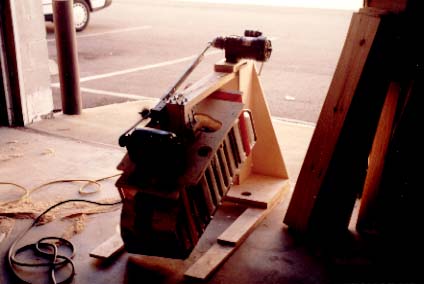
The test calls for the tank to be supported as it is mounted in the airplane. We made a test fixture of Baltic birch plywood glued together with ordinary yellow 'carpenter's glue' (Elmers, Titebond, etc.) Because the tanks in the Falco are supported by straps, we reproduces this by making a plywood plate and hung the tanks from this with nylon web band clamps that we purchased from a hardware store.
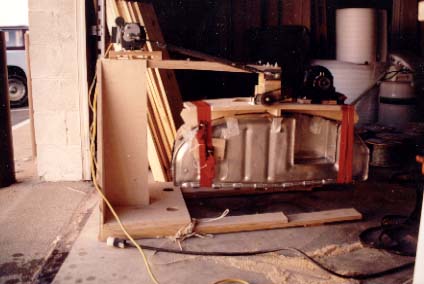
The vibration was created by an old electric motor and we put an eccentric weight on a shaft mounted on a couple of pillow block bearings and used two pulleys and a belt to drive the shaft with the eccentric weight.
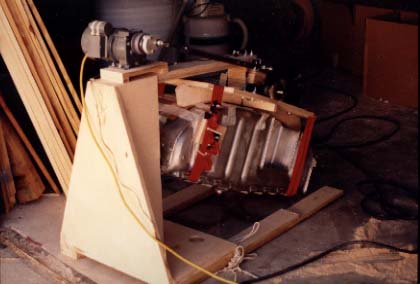
To cause the rocking motion of 15° each way, 16 to 20 times a minute, we bought a gearmotor and mounted it on top of the rig, with an eccentric arm driving a pushrod to the plate on which the tank was mounted.
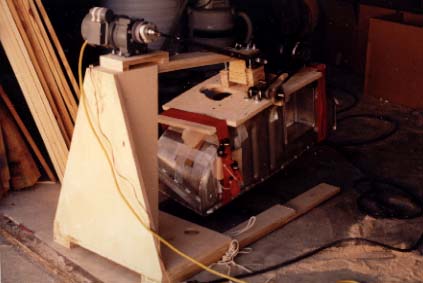
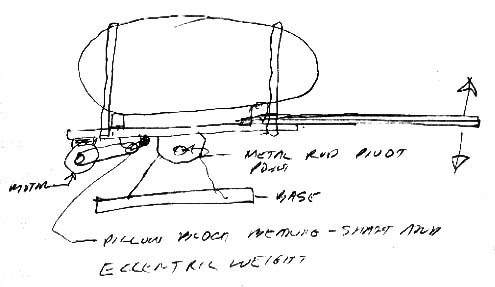
In your case, I suggest making a flat table that will rock like a child's seesaw, mount the tank on top of the table and put a motor on the bottom of the table with a belt to an eccentric weight on the end of a shaft. If you are only going to test the tank for an hour or two, you could do the rocking manually with a long handle.
If the tank has a problem, you will find out very quickly when you see how it behaves in this test!
Alfred
|
|